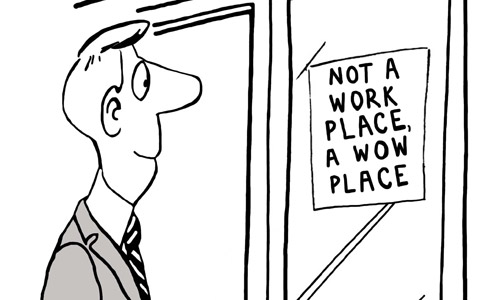Great strategic plans are only delivered by high-performing organisational cultures.
Winning organisations define, evolve and embed their chosen culture; and align their stakeholders to it – whether employees, investors, partners, governance, or customers. The right context and culture empowers decision-making at every level of your organisation, and underpins high-performance.
So what are the signs of a high-performing culture?
Organisational culture is defined as “how we do things around here”. Every organisation has its own distinct culture which will guide the experience of all stakeholders involved with it; whether investors, customers or employees.
- Employees feel pride in the work they do; there is mutual respect through all tiers of the organisation; managers can clearly and confidently translate the strategy and behaviours of the organisation to their teams; and people can enjoy the open relationships they have with their colleagues. All of this generates a strong sense of trust in the leadership of the organisation, in its managers, and within teams. Organisational performance is accelerated.
- Continual improvement processes are embedded in the way that things get done. The leadership sets the overall direction and purpose. Meanwhile, ideas for improving the way things are done at a tactical level are generated regularly by the team members themselves, based on what they experience in their day-to-day work and the fact that they are highly motivated to make things better. The cumulative impact of making regular, small improvements has a huge impact on overall business performance.
- High-performing cultures are created when leaders provide clarity and purpose, and employees are empowered to get things done in their own way. The “Loose-Tight model” is a useful reference. The tightness is created by leaders’ clarity on organisational purpose and strategy, and what individuals are personally there to achieve. However, this is combined with a “loose” approach, in that it’s open to employees how they deliver on this. Teams have tactical freedom and are empowered to find their way to address the situation.
 Amidst today’s incredibly competitive commercial landscape, it is increasingly challenging to successfully develop, progress, retain and acquire the talented individuals on whom our businesses’ future performance is dependent. What sets organisations apart is not solely the quality of their product or services, but the strength and resilience of their business culture. Your culture uniquely marks out your business from the competition; and it is assessed and acted on by your customers, partners, investors, governance providers, and present and potential employees. Creating a compelling, high performance culture provides a reputational halo that translates into commercial advantage.
Amidst today’s incredibly competitive commercial landscape, it is increasingly challenging to successfully develop, progress, retain and acquire the talented individuals on whom our businesses’ future performance is dependent. What sets organisations apart is not solely the quality of their product or services, but the strength and resilience of their business culture. Your culture uniquely marks out your business from the competition; and it is assessed and acted on by your customers, partners, investors, governance providers, and present and potential employees. Creating a compelling, high performance culture provides a reputational halo that translates into commercial advantage.
Tim Pointer, Founder & CEO, Starboard
We deliver this by:
- Assessing organisational culture using internal and external analyses; interpreting the results; and setting out what to transform & what to sustain
- Questioning whether you have the appropriate behaviours to successfully enable your strategic approach.
- Comparing your organisation’s assets and flaws with your competitors to identify opportunities for focus.
- Promoting your organisational culture as an employer of choice.




